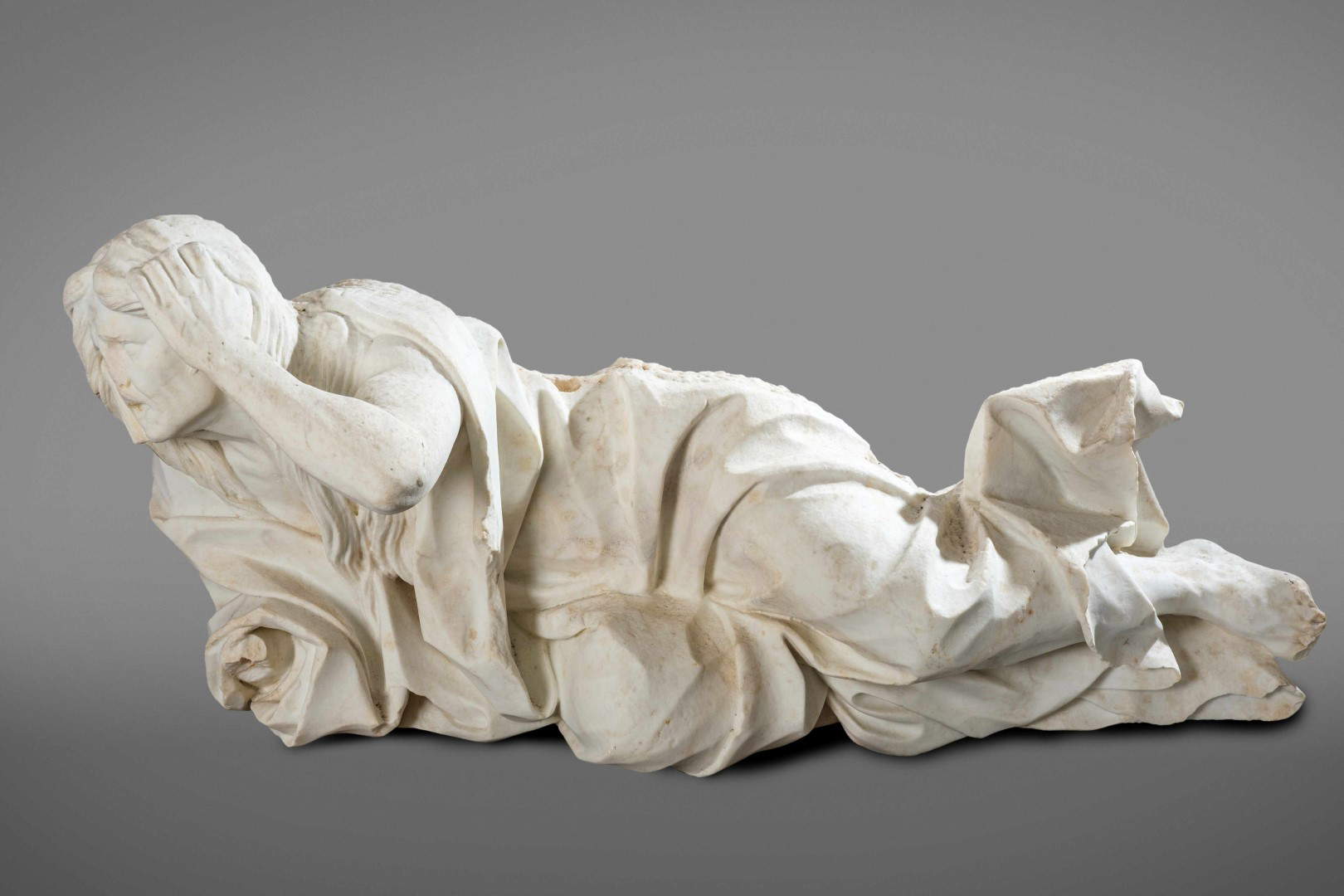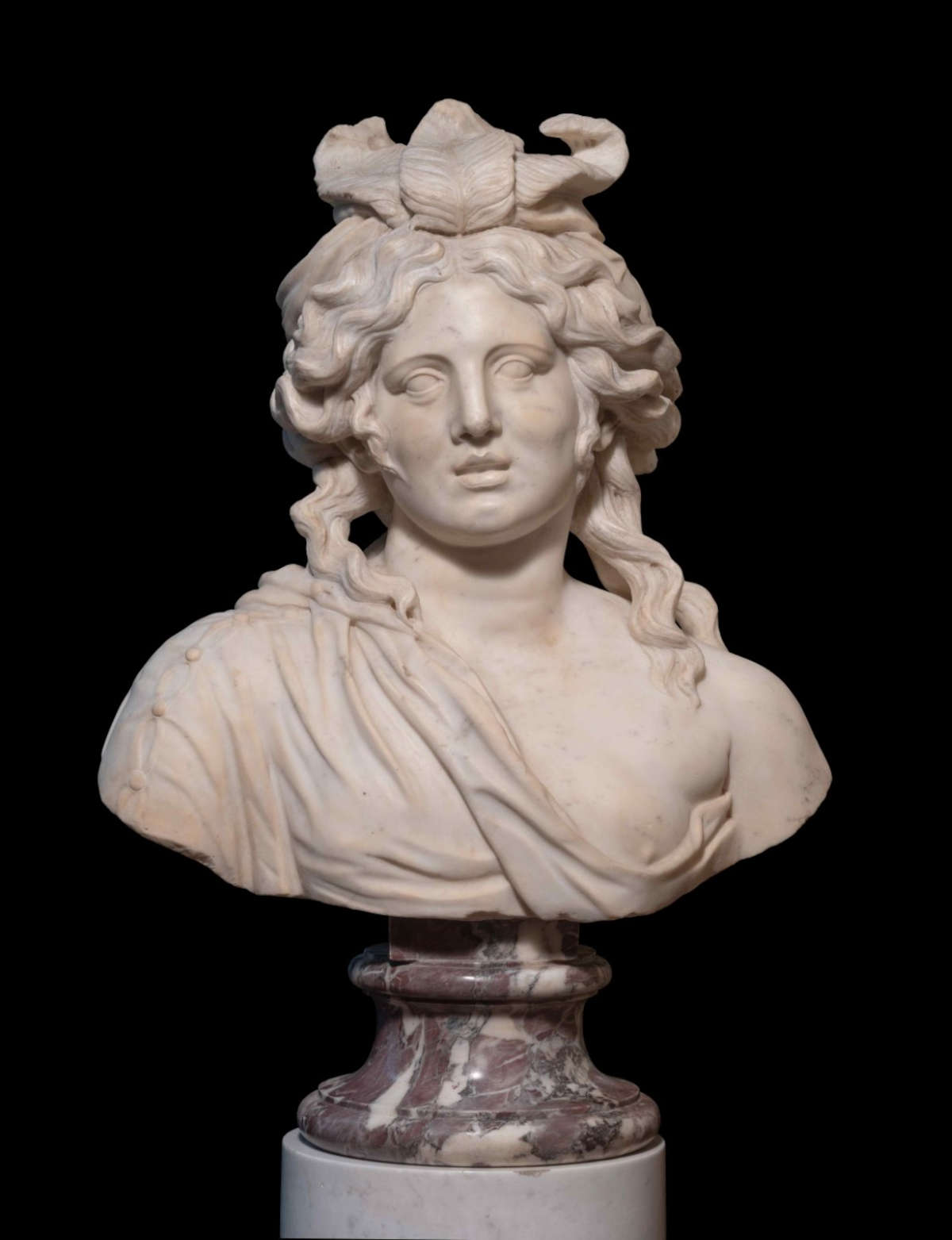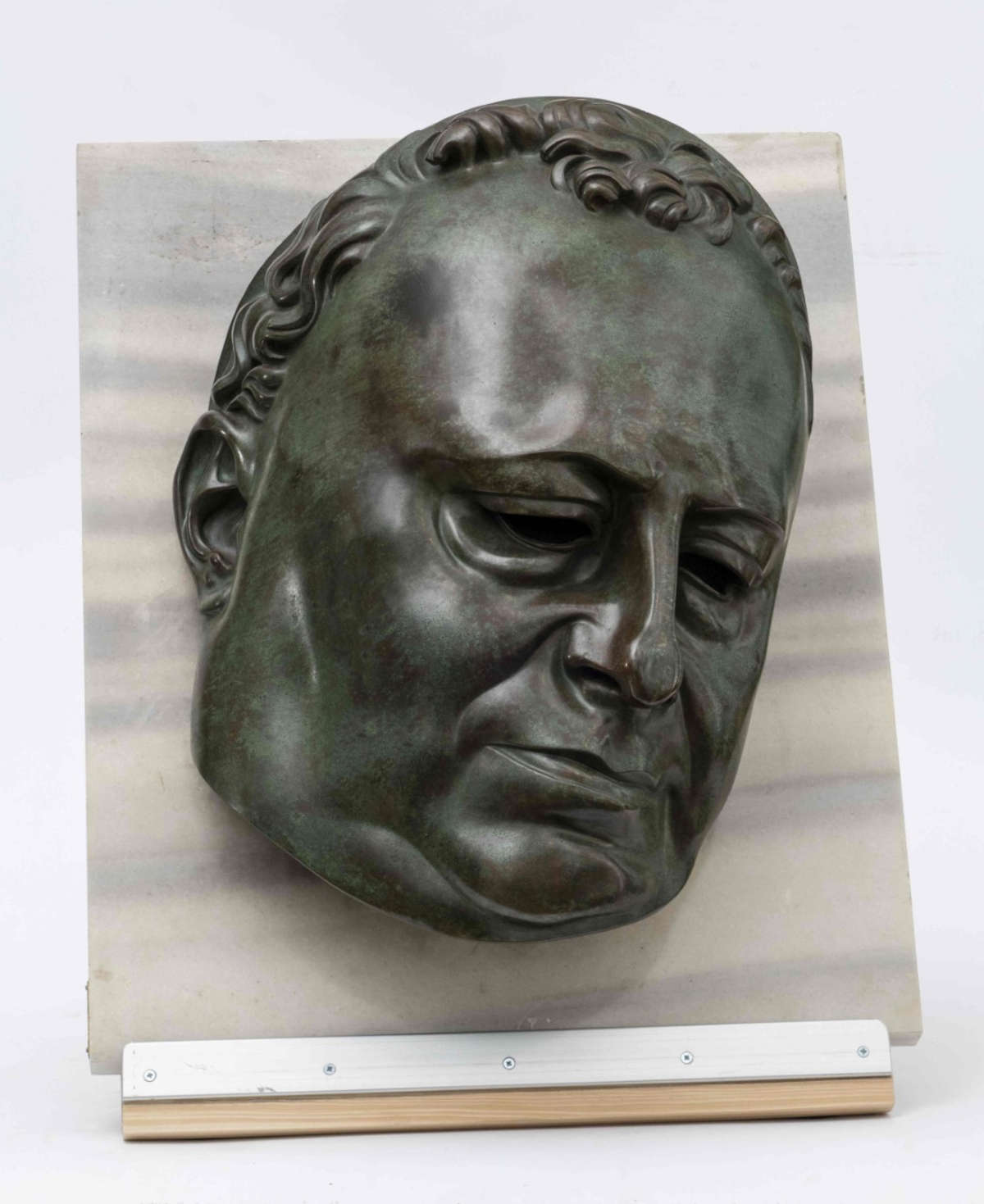The second edition of Arte e Collezionismo a Roma, organized by the Associazione Antiquari d’Italia, will be held Sept. 20-23, 2025 at Palazzo Barberini, home of the Gallerie Nazionali di Arte Antica. Among the booths present, one of the most anticipated is that of Brun Fine Art, which in room 98, a space dedicated to booth 36, will present masterpieces ranging from the seventeenth to the twentieth century, with a focus on rare works and some surprising finds.
One of the finds is theAllegory of Envy by Giuseppe Mazzuoli (Volterra, 1644 - Rome, 1725), a Carrara marble sculpture dated 1701. Mazzuoli, who grew up in Siena in a family of stonemasons and architects, trained in Rome under Antonio Raggi and collaborated with Gian Lorenzo Bernini on important Vatican sites, such as that of Pope Alexander VII’s tomb, for which he created the figure of Charity. Considered the only sculptor capable of ferrying Bernini’s language across the threshold of the 18th century, Mazzuoli is the author of this dramatic and powerful senile figure, depicted tearing her hair in despair. The work was part of the funeral monument dedicated to Carlo and Alessandro de Vecchi, commissioned by their Sienese relatives and placed in the Roman basilica of Santi Apostoli between March and April 1701. Dismantled after only seven months as a result of renovation work on the building, the ensemble had traces of the sculpture lost for centuries, reappearing only very recently thanks to a surprising find.

Another highlight of the exhibition is the display of a splendid unpublished work, the Personification of Madness, datable between 1650 and 1660, attributed to Orfeo Boselli (Rome, 1597 - 1677), a Roman sculptor active at the height of the 17th century, in the era dominated by the personality of Gian Lorenzo Bernini. While Boselli’s name is not known to the general public, his work plays an important role as an expression of the coeval artistic context.
The Carrara marble bust depicts a woman characterized by a singular headdress formed by a veil and three mighty feathers arching like snakes. Contributing to the figure’s attractiveness are the windswept hair and the light robe that leaves the left breast uncovered. This image, sensual and dramatic, has been recognized by art historian Luca Annibali as an extraordinary personification of Madness, consistent with iconographies widespread between the sixteenth and seventeenth centuries. In iconographic manuals, in fact, Folly is sometimes depicted as a woman with disheveled hair, three feathers on her head, and discreet clothing. The original source of this depiction can be traced to Ludovico Carracci’s frescoes at the former convent of San Michele in Bosco in Bologna, where the madwoman healed by St. Benedict was depicted. The image is in turn derived from a printed repertory, the Vita et miracula sanctissimi patris Benedicti, engraved by Aliprando Caprioli from drawings by Bernardino Passeri and published in Rome in 1579. It is not known who commissioned the bust, probably intended for an aristocratic environment and placed above a console table as a moral warning. The attribution to Boselli, however, should leave no room for uncertainty thanks to the stylistic analysis that reveals his hand.

The third piece of news concerns Adolfo Wildt (Milan, 1868 - 1931), whose 1928 Mask of Cesare Sarfatti, a bronze relief, chiseled, patinated and polished, mounted on a posthumous marble base, is presented. It is a work that, thanks to a lucky find, can be identified with the bronze exhibited between November and December 1928 at the First Regional Exhibition of Lombard Art of the Society for Fine Arts and Permanent Exhibition in Milan.
A review that appeared in the newspaper Il Lavoro d’Italia on November 30, 1928, signed by Alberto Neppi, offers valuable details for reconstructing the history of this bronze. On that occasion, Cesare Sarfatti’s Mask was exhibited together with a marble “Santa Lucia,” with a green patina that aroused particular interest. Wildt, in fact, was not used to using green patinas, preferring uniform brown tones. The review describes the work’s expressive power, emphasizing its ability to combine references to Roman imperial portraiture with an all-modern restlessness, linked to the twentieth-century theme of the mask-person, also so dear to Pirandelli’s sensibility.
The bronze displayed by Brun Fine Art belonged to Amedeo Sarfatti, son of Cesare and Margherita Sarfatti, a critic and central figure in the cultural debate of the time. The work remained in Amedeo’s Venetian home until recent times. Also known to the literature is a marble specimen of the same mask, which can be dated to 1930 and remained in Wildt’s studio for a long time, then passed by inheritance until it entered the Calmarini collection in Milan. Another bronze specimen, made in 1927 and placed at the Istituto Stomatologico di Milano, went missing during World War II.

The Mask of Cesare Sarfatti thus stands out as an emblematic work of Wildtian production, capable of fusing the search for a monumental language with a modern, psychological tension. The polished surface of the bronze, the blue-green patina, the partially flattened face and the intensity of the gaze contribute to create a suspended image, combining celebration and disquiet, Romanity and modernity.
Brun Fine Art’s booth at Palazzo Barberini is thus configured as an itinerary through centuries of sculpture, from the Baroque season to the height of the 20th century. The common thread is represented by the quality of the works and their ability to tell complex stories, made up of commissions, dispersions, rediscoveries and reinterpretations.
 |
| Envy, Madness and the Mask: Brun presents three important findings for sculpture |
Warning: the translation into English of the original Italian article was created using automatic tools. We undertake to review all articles, but we do not guarantee the total absence of inaccuracies in the translation due to the program. You can find the original by clicking on the ITA button. If you find any mistake,please contact us.